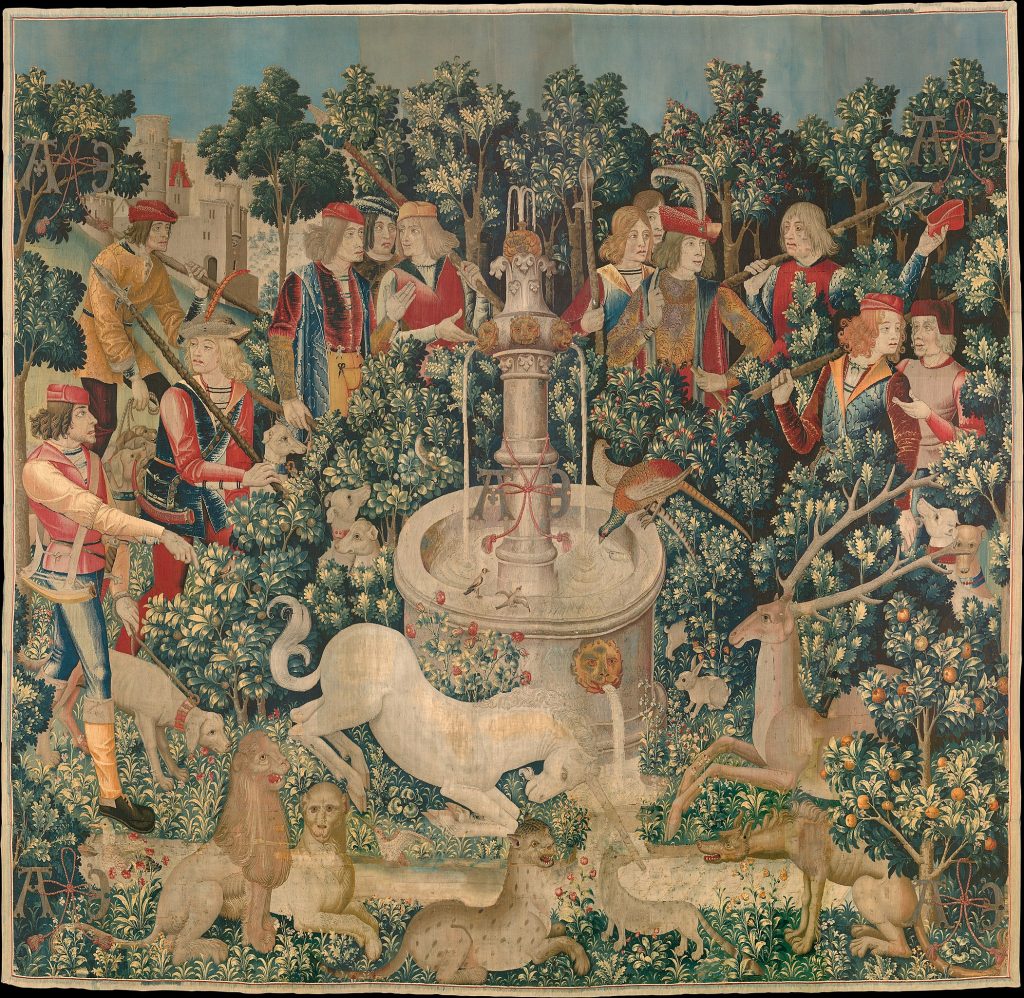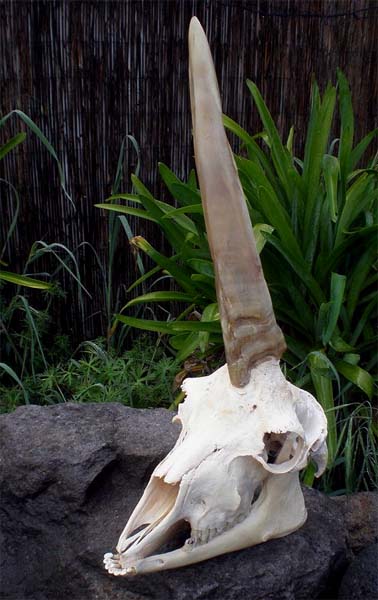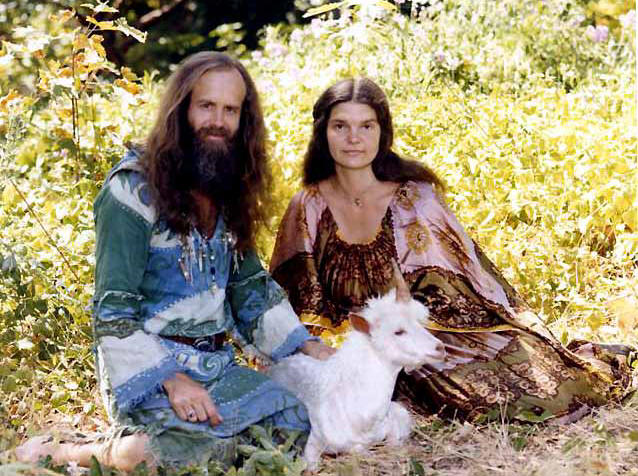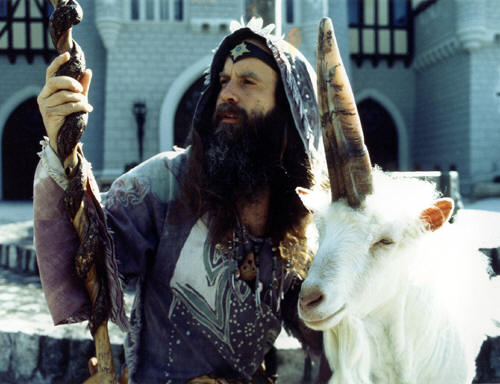 modern society, Unicorns are considered mythical creatures that do not and have not existed. However, certain historians and other experts within the literature would argue otherwise. Within the 19th and 20th centuries, there was a handful of experts that tried to create or, better said, grow unicorns and out of them all, only one man actually managed, his name is Oberon Zell.
modern society, Unicorns are considered mythical creatures that do not and have not existed. However, certain historians and other experts within the literature would argue otherwise. Within the 19th and 20th centuries, there was a handful of experts that tried to create or, better said, grow unicorns and out of them all, only one man actually managed, his name is Oberon Zell.
The historical records of Unicorn Tapestries from around 1500 CE are used to argue for their existence. These are the very archetype of the classic Unicorn. They are pure white, with long flowing manes, cloven hooves, uplifted tufted tails, and little goatees. It is clear that they are caprine—from goat stock. Bull, or taurine Unicorns, are depicted in all the images from the Bronze Age—primarily from the Indus valley. Other images could be identified as antelopine, arien (ram), and even cervine (deer) (in Asia).

The unicorn was most famous during the Middle Ages, while the Deluge occurred at least 6,000 years before. Although the arguments can vary from person to person about their existence, one fact is that there are not that many representations of unicorns throughout history, and even fewer fossils found to represent their existence. However, there are some potential explanations for this.
Although the Unicorn’s true origins are unknown, he was commonly represented in the sculptures, cylinder seals, and bas-reliefs of Mesopotamia and the Indus Valley about 4,000 years ago. We have just lately been able to read the inscriptions that accompany these cryptic images. Archaeologists have attempted to explain these depictions by claiming that ancient artists were unable to understand the perspective and depicted two-horned animals in profile by portraying only one horn. Yet, there are numerous bas-reliefs that depict both two- and one-horned monsters in profile. Other photos are entirely sculpted, leaving no ambiguity about the subject matter.
Despite their history and potential existence, how is this man that was so obsessed with Unicorns, he went as far as creating the surgical patent for growing unicorns?
Oberon Zell the “God” of Unicorns
Some may see Zell as a bit of a madman with just a dream and a thought, but he is in fact a very knowledgeable man who not only studied a lot of literature in various fields, but even wrote some of his own books on different sciences.
From 1961 through 1965, he attended Westminster College in Fulton, Missouri, concentrating in Psychology, Sociology, Anthropology, and Pre-Med. He continued his education at Washington University in St. Louis, where he received a USPHS scholarship in Clinical Psych. He then finished a DD program at Life Science College (a small Christian seminary in Rolling Meadows, Illinois).
He graduated from Harris Teacher’s College in St. Louis with a teaching certificate. Zell worked for the Human Development Corp. in the “War on Poverty” for many years as a counselor, social psychologist, and program supervisor, as well as teaching in public schools.
His obsession with unicorns started in the 1970s with a fantasy novel by Peter S. Beagle, The Last Unicorn. The ideology that unicorns once roamed our Earth and they have ended up extinct due to various reasons is a thought that would not leave him to live in peace.
Patent for the Surgical Procedure
The story of Oberon Zell creating unicorns was very mediatized back in the late 1970s as well as earlier 1980s, but had been forgotten in time. The surgical procedure he created was inspired by Dr. Franklin Dove who also tried to create unicorns, but medicine was not as advanced during the time.
In January 1935 Dr. W. Franklin Dove, a biologist at the University of Maine, wrote for the Journal of Experimental Zoology, in Volume 69, Number 3, an article entitled: The Physiology of Horn Growth, in which he traced various previous efforts at developing a unicorn and documented his own efforts along those lines.
Also in the Scientific Monthly dated May 1936, Volume 42; Pages 431-436, Dr. Dove wrote an article entitled: Artificial Production of the Fabulous Unicorn, in which he traced various efforts to grow unicorns, but all have failed.
Based on the surgical paten 4429685, Patented Feb. 7, 1984, all unicorns are said to have been created through a surgical process in which the horn buds of a newly-born animal are transferred from their usual place to a central position on the front of the animal’s skull. It is not often known that during the first week of development, the horn buds are only linked to the skin, with attachment to the skull beginning later. In other words, rather than being outgrowths of the frontal bones of the skull, horns are the product of independent ossifications that fuse to the frontal bones of the head.

These horn buds are originally fed with blood via capillaries, and it is only later in development that the horn develops a complicated blood circulating system. Previous work has included transplanting horn buds to the front of the skull or altering the position of pedicled flaps housing the horn bud. Typically, the technique has only been performed on the Bovinae family, which includes the five subfamilies Bovinae, Cephalophinae, Hippotraginae, Antilopinae, and Caprinae, i.e. cattle, antelopes, sheep, and goats.
The objective of this invention is to give an improved way of creating a unicorn animal with higher mental ability and more physical capabilities.
To put things in simpler terms, goats have been used and have been surgically altered to grow a horn in the middle of their skull, instead of two horns as they usually grow. Based on the tales of Zell, many of the procedures done have failed, but as we can see through the pictures, some have gone very well.

After his creation was a success, Zell wanted to show the world that Unicorns actually exist and he did so through a 4-year exhibition lease we arranged with the Ringling Bros./Barnum & Bailey Circus. Over many years his story was forgotten. It is most likely that no other unicorns will be created, at least legally as the patent expired in 2001.
Despite the existence of unicorns throughout history, this is a tale that deserves to not be forgotten and cataloged in history.
Avid Writer with invaluable knowledge of Humanity!
Upcoming historian with over 30 million views online.
“You make your own life.”





